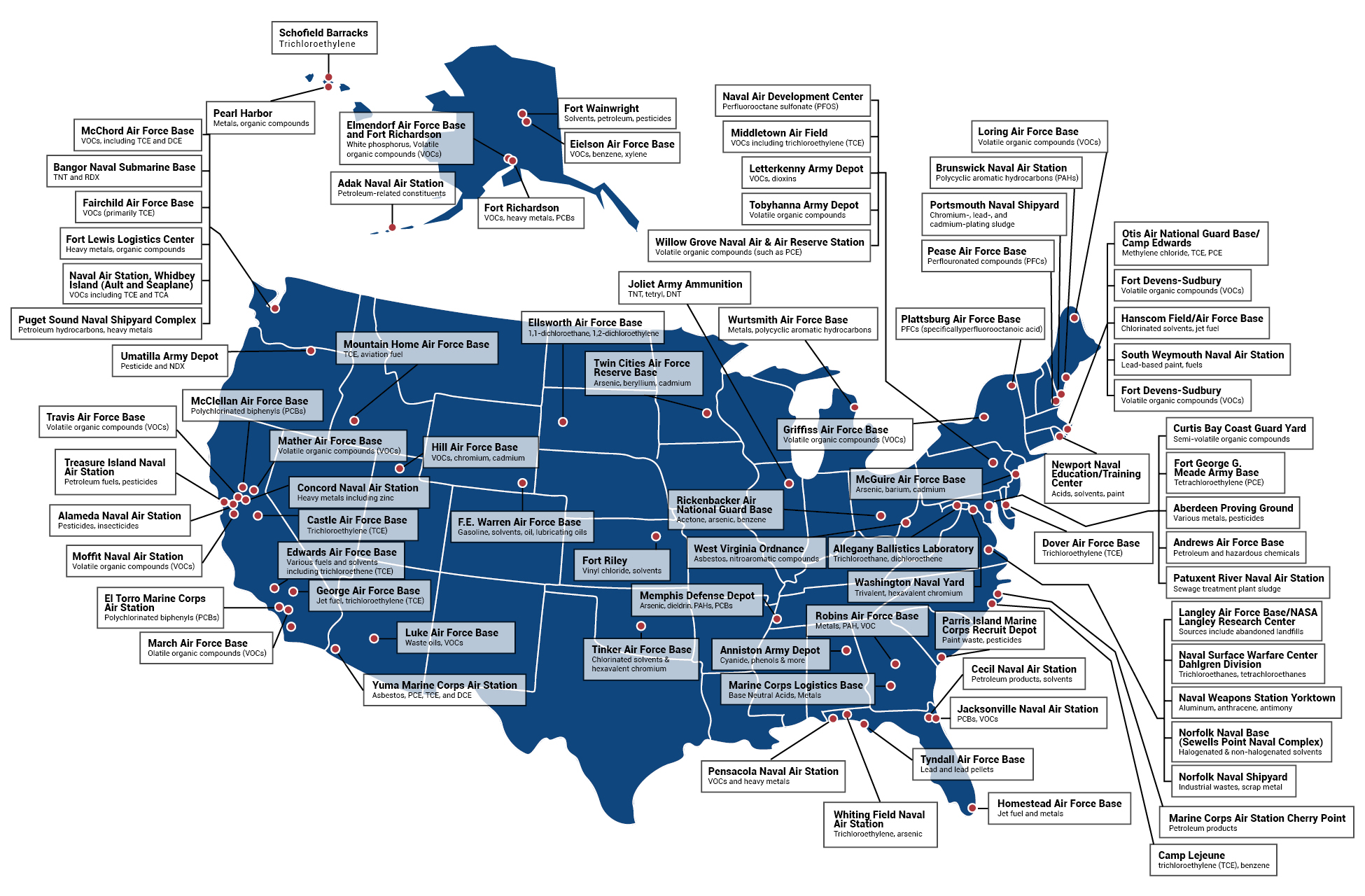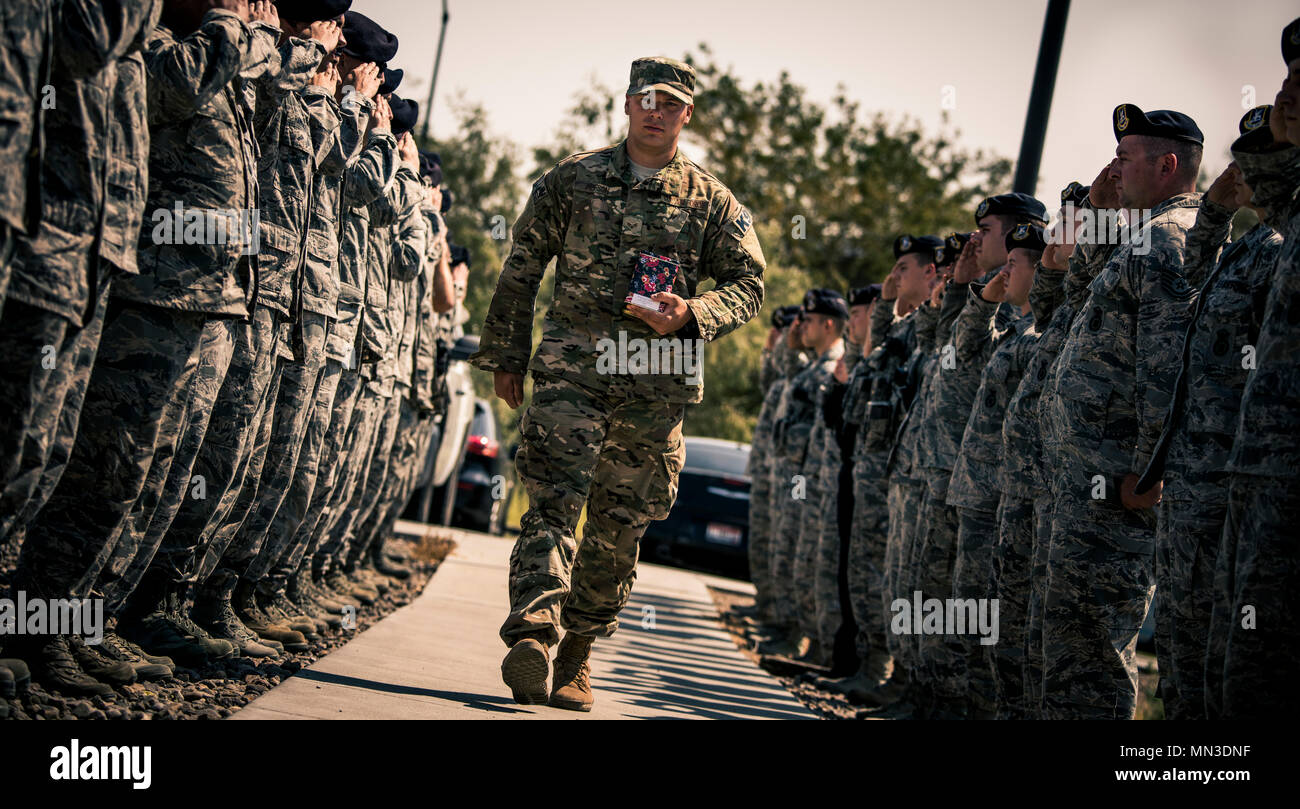Military Base Idaho - At some of the country's military bases, this "permanent chemical" seeped into the ground and drinking water.
BOISE, Idaho - Hundreds of military bases across the country, including two in Idaho - Gwinn Field and Mountain Home Air Force Base - have tested positive for chemicals linked to cancer and other health effects.
Military Base Idaho
"PFAS is a compound that is in many different products that are used across the country," said Idaho National Guard Public Affairs Lt. Christopher Borders. "Everything in Teflon cooking, to waterproof clothing, carpets."
U.s. Air Force Senior Airman Autumn Willingham, 389th Fighter Squadron Load Crew Member, Installs A Fin To An Air Intercept Missile, April 16, 2021, At Mountain Home Air Force Base, Idaho. The
"We trained with it and then wanted to use it in the event of an aircraft shoot down," Borders said. "It's used here at Gowin Field and at our training area at Orchard Combat Training Center. It was the industry standard and I think it still is. We started using it before 1970 but in 2016 Stopped using it when we were notified. Health concerns."
Related: Don't throw it in the trash: How to dispose of household hazardous materials in Ada County
At Gowin Field, Borders says two groundwater sites have tested above what the EPA considers safe levels for PFAS.
"However, the Department of Defense considers them low risk, low priority because of the risk to the public and drinking water," Borders said.
Amazon.com: Uss Hawkbill Veterans Base Pocatelo/twin Falls Idaho Patch: Clothing, Shoes & Jewelry
"No PFAS compounds have been detected in public water systems within 20 miles of Gowin Field above the EPA's Lifetime Health Advisory," Borders said.
Mountain Home Air Force Base also tested positive for PFAS, but unlike Gwynn Field, no contaminants were found in the drinking water. -115.87 Coordinates: 43°02′N 115°52′W / 43.04°N 115.87°W / 43.04; -115.87
Mountain Home Air Force Base (IATA: MUO, ICAO: KMUO, FAA LID: MUO) is a United States Air Force (USAF) installation in the western United States. The base is located in southwestern Idaho in Elmore County, 20 km southwest of Mountain Home, which is located 65 km southeast of Boise via Interstate 84. The base is also used by the Republic of Singapore Air Force (RSAF), which maintains a squadron. Long-term mission to base F-15SG fighters and a squadron of RSAF and USAF personnel.

The host unit at Mountain Home has been the Air Combat Command's (ACC) 366th Fighter Wing (366 FW) since 1972, nicknamed the "Gun Fighter". The base's primary mission is to provide combat airpower and combat support capabilities to respond to and sustain global emergency operations.
Idaho Military Bases
Built in the early 1940s as a bomber training base during World War II, after the war it was a short carrier, a bomber and missile base. It became a fighter jet base 57 years ago in 1966.
Crews began construction on the base in November 1942, and the new arena was officially opened on August 7, 1943. Shortly thereafter, Air Force personnel in the field began training the United States. World War II Army Air Force Crew. The 396th Bombardment Group (Heavy) was the first unit assigned, and its purpose was to train crews for the B-17 Flying Clay. However, before the first B-17s arrived, plans for the field were changed and the 396th was transferred to Moses Lake AAF, Washington.
Instead of training B-17 crews, Mountain Home Air Force began training crews for the B-24 Liberator. The first group to do so was the 470th Bombardment Group (Heavy), which trained at Mountain Home from May 1943 to January 1944, when the unit moved to Tonopah AAF, Nevada. The 490th Bombardmt Group (Havy) replaced the 470th and trained B-24 crews until it was transferred to the RAF in April 1944.
The base was inactive for three years, until December 1948, when the newly independent US Air Force reopened the base. The 4205th Air Base Group was activated on 12 December to prepare the newly designated Mountain Home Air Force Base for operational use.
Idaho State Representatives Tours Mhafb > Mountain Home Air Force Base > News & Photos/videos
In 1953, the base was transferred to the Strategic Air Command (SAC), which assigned its 9th Bombardmt Wing to the mountain home. The 9th moved to Mountain Home AFB in May 1953 and began flying B-29 bombers and KB-29H refuelers. The 9th began replacing the new B-47 strategic bomber and KC-97 tanker in September 1954, providing a warning bomber for combat at a moment's notice and its mission in the 1950s and early Cold War years. Continued as prevention. 1960s
In 1959, construction of three SM-68 Titan missile sites began in the region, and the missiles arrived in April 1962.
The 569th Strategic Missile Squadron controlled these areas and was assigned to the 9th Bombardment Wing in August 1962. To prepare for the addition of missiles to its bomber force, it was redesignated in April 1962 as the 9th Strategic Air and Space Wing.
A few years later, SAC's mission at Mountain Home ended, and in November 1964, the US Air Force announced that the missile sites would close by mid-1965, part of a larger phase of base closures that Announced by Defense Secretary Robert McNamara. .
Siblings Serve In Idaho Guard
Other bases in the area were USAF installations: Cottonwood Radar Station in northern Idaho and SAC Larsen AFB, a B-52E Stratofortress (and KC-135A Stratotanker) installation at Moses Lake in eastern Washington.
In late 1965, the USAF also began phasing out older B-47s and in early 1966 announced plans to relocate the base from SAC to the Tactical Air Command (TAC) to bring home the 67th Tactical Reconnaissance Wing. .
The 366th Fighter Wing (under various names) has been the host unit at Mountain Home for over 50 years, after returning from the Vietnam War in late 1972.
Before the 366th Tactical Fighter Wing arrived at Mountain Home, the 389th, 390th, and 391st Tactical Fighter Squadrons had returned from South Vietnam, joined the 347th, and began replacing F-111A Aardvark aircraft. For the first time since going to Vietnam, the wing regained its three original flying units.
Montana Soldiers Reflect On Year In Poland
During 1969, a sister unit began operating in the southern part of the base, using part of the original SAC briefing area, and sharing about half of the Mole Hole briefing facility with the NCO Leadership School from the main base. . of the. 1, the 320th BW flew a warning mission with two B-52 bombers and two KC-135 tankers. The unit was disbanded in the spring of 1975 and returned to Mather AFB.
The operation continued unchanged for several years. The wing tested its readiness in August 1976 when a border incident in Korea prompted the United States to increase its military presence in South Korea as a show of force. The 366th deployed a squadron of 20 F-111 fighters, which arrived in South Korea just 31 hours after receiving the launch notification. Tasjoner left shortly after and the regiment returned home.
In early 1991, the USAF announced that the 366th would become the Air Force's first "air interception" composite wing. The wing will be enhanced by the addition of a squadron of EF-111A Rav electronic warfare aircraft and a squadron of B-1B Lancer bombers to provide a dynamic five-squadron wing capable of rapid deployment and integrated combat air power. .

The rapid transition of a composite air intervention wing from concept to reality began in October 1991, when the USAF redesignated the wing as the 366th Wing. The wing's newly activated "Fighter Squadron" became part of the composite wing in March 1992. The 389th Fighter Squadron began flying dual-role F-16C Fighter Falcons, while the 391st Fighter Squadron was equipped with the new F-15 Eagle. These two squadrons provide a 24/7 strike capability to the gunfighters.
Virginia Air Force Specialist Killed In Idaho Training Exercise
After the terrorist attacks of September 11, 2001, as a result of Operation Freedom, the 366th Wing called again. While assigned to Diego Garcia of the 34th Bomb Squadron as the B-1 component of the 28th Air Operations Wing, the wing deployed a support package to Al-Adeed Air Base in Qatar to support the large-scale airfield. Completely transformed into a functional airport. Combat Operations In October 2001, the 391st Fighter Squadron deployed to Al-Jaber Air Base, Kuwait, while the 389th Fighter Squadron moved to Al-Adeed in November.
After the wing's return from Southwest Asia, the USAF began strengthening its B-1 Lancer and KC-135 Stratotanker forces. This led to the redeployment of wing bombers and tankers. Aircraft from the 22nd ARS began transferring to McConnell AFB, Kansas in May 2002, and the squadron was inactivated in August. The 34th BS B-1Bs began moving to Ellsworth AFB, South Dakota in June and the squadron officially moved in September. After these assets were withdrawn, the USAF designated the 366th as a fighter wing. With these changes, the wing's 10-year mission as the Air Force's only standing air operations wing ended. The continued restructuring of the 366th Fighter Wing was formalized with the 2005 base realignment, which coincided with a 150+ large-scale merger. F-22 Raptors. After the retirement of the F-16, Mountain Home AFB was chosen to install the F-15E because of its ideal training area.
Military drone range, laser range finder military, military range bags, military range targets, long range military radio, military radio range, military range finder, military long range binoculars, range rover military discount, military range rover, range of military drones, military range bag
0 Comments